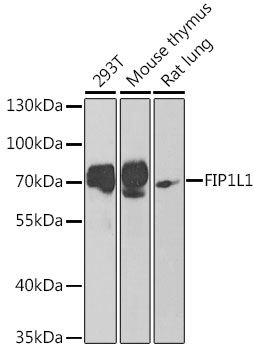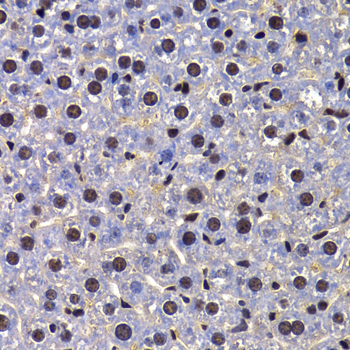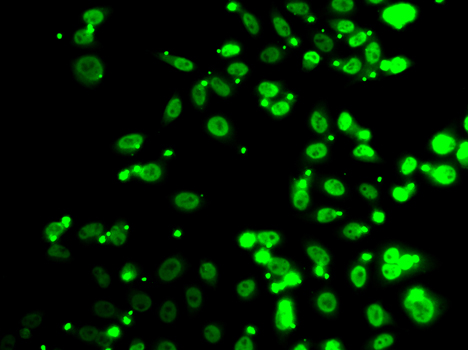-
Product Name
FIP1L1 Polyclonal Antibody
- Documents
-
Description
Polyclonal antibody to FIP1L1
-
Tested applications
WB, IHC, IF
-
Species reactivity
Human, Mouse, Rat
-
Alternative names
FIP1L1 antibody; FIP1 antibody; Rhe antibody; hFip1 antibody; pre-mRNA 3'-end-processing factor FIP1 antibody
-
Isotype
Rabbit IgG
-
Preparation
Antigen: Recombinant fusion protein containing a sequence corresponding to amino acids 1-300 of human FIP1L1 (NP_001128409.1).
-
Clonality
Polyclonal
-
Formulation
PBS with 0.02% sodium azide, 50% glycerol, pH7.3.
-
Storage instructions
Store at -20℃. Avoid freeze / thaw cycles.
-
Applications
WB 1:500 - 1:2000
IHC 1:50 - 1:200
IF 1:50 - 1:100 -
Validations

Western blot - FIP1L1 Polyclonal Antibody
Western blot analysis of extracts of various cell lines, using FIP1L1 antibody at 1:1000 dilution.Secondary antibody: HRP Goat Anti-Rabbit IgG (H+L) at 1:10000 dilution.Lysates/proteins: 25ug per lane.Blocking buffer: 3% nonfat dry milk in TBST.Detection: ECL Basic Kit .Exposure time: 90s.

Immunohistochemistry - FIP1L1 Polyclonal Antibody
Immunohistochemistry of paraffin-embedded mouse liver using FIP1L1 antibody at dilution of 1:100 (40x lens).

Immunofluorescence - FIP1L1 Polyclonal Antibody
Immunofluorescence analysis of A549 cells using FIP1L1 antibody .
-
Background
Component of the cleavage and polyadenylation specificity factor (CPSF) complex that plays a key role in pre-mRNA 3'-end formation, recognizing the AAUAAA signal sequence and interacting with poly(A) polymerase and other factors to bring about cleavage and poly(A) addition. FIP1L1 contributes to poly(A) site recognition and stimulates poly(A) addition. Binds to U-rich RNA sequence elements surrounding the poly(A) site. May act to tether poly(A) polymerase to the CPSF complex.
Related Products / Services
Please note: All products are "FOR RESEARCH USE ONLY AND ARE NOT INTENDED FOR DIAGNOSTIC OR THERAPEUTIC USE"
